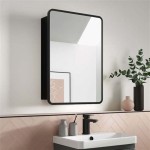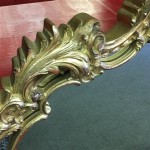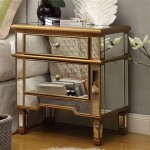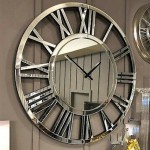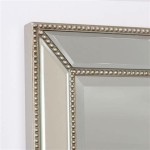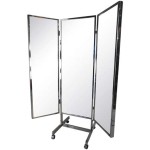Antique Mirror Sheet Glass
Antique mirror sheet glass holds a unique allure, prized for its distinctive aesthetic characteristics and historical significance. Unlike modern, perfectly reflective glass, antique mirrors offer a glimpse into the past with their subtly distorted reflections and unique surface textures. This article explores the origins, manufacturing processes, characteristics, and applications of antique mirror sheet glass.
The history of mirror making dates back centuries. Early mirrors were made from polished obsidian, metal, or other reflective materials. However, the production of glass mirrors began to emerge during the Roman Empire. Early glass mirrors utilized a backing of molten lead, tin, or mercury. The method evolved, and during the Renaissance, Venetian glassmakers perfected the art of creating highly reflective mirrors using a tin-mercury amalgam backing. This technique produced the antique mirrors highly sought after today.
The Venetian method involved meticulously blowing a cylinder of glass, flattening it, and carefully applying the tin-mercury amalgam to the back surface. This process was complex and labor-intensive, resulting in relatively small, expensive mirrors. The size limitations stemmed from the challenges of evenly blowing and flattening large glass cylinders. Variations in thickness and imperfections inherent in the hand-blown process contributed to the characteristic distortions found in antique mirror glass.
The silvering process, which largely replaced mercury silvering in the mid-19th century, involved depositing a thin layer of silver onto the glass surface using a chemical reaction. This method allowed for the production of larger, more uniform mirrors at a lower cost. While silvered mirrors offer excellent reflectivity, they lack the unique characteristics of mercury-backed antique mirrors.
Several key features distinguish antique mirror sheet glass from its modern counterparts. One of the most noticeable is the reflective surface. Due to the imperfections inherent in the historical manufacturing methods and the aging of the amalgam backing, antique mirrors often exhibit a slightly hazy or mottled reflection. This characteristic softening of the reflection adds to the antique charm and creates a unique visual effect.
Furthermore, antique mirror glass frequently shows signs of age, including subtle pitting, discoloration, and scratches. These imperfections, often referred to as "foxing" or "patina," are evidence of the mirror's age and history, further enhancing its antique appeal. While some might view these imperfections as flaws, they are highly prized by collectors and designers seeking authentic antique pieces.
The glass itself also plays a role in the overall appearance. Early glassmaking techniques resulted in subtle variations in color and clarity. Antique mirror glass can range from a slightly greenish tinge, characteristic of early glass, to a clearer, more colorless appearance. These variations are due to the presence of impurities in the raw materials used in the glassmaking process.
The backing of antique mirror glass is another crucial element. The mercury-backed mirrors often exhibit areas of darkening or blackening over time, known as "blackening" or "oxidization." This effect is caused by the gradual deterioration of the mercury amalgam. While it can impact reflectivity, it also contributes to the antique aesthetic.
Today, antique mirror sheet glass finds its way into a variety of applications, catering to those who appreciate its historical significance and distinct aesthetic qualities. Interior designers often incorporate antique mirror glass into projects to add a touch of vintage elegance and create unique focal points. It can be used for wall coverings, furniture accents, framed art, and decorative elements in both residential and commercial settings.
Restoration projects frequently require antique mirror glass to maintain the historical accuracy and integrity of period buildings and antique furniture. Matching the original glass's characteristics is essential for preserving the authenticity of the restoration. This can be a challenging task, requiring sourcing from specialized suppliers or salvaging from other antique pieces.
Artists and craftspeople also utilize antique mirror sheet glass in their creations. The unique texture, reflective qualities, and historical significance of the glass make it a desirable material for a range of artistic expressions. It can be incorporated into mosaics, sculptures, jewelry, and other decorative objects.
Collecting antique mirror glass has also become a popular pursuit. Collectors seek out rare and unusual pieces, appreciating the historical craftsmanship and the unique beauty of each individual mirror. Factors such as size, age, condition, and the presence of unique characteristics contribute to the value of antique mirror glass.
When working with or handling antique mirror glass, certain precautions should be taken. Due to the historical use of mercury in the backing, it's crucial to avoid contact with broken or chipped areas. Proper ventilation is essential when working with antique mirrors, particularly during restoration projects. Professional advice should always be sought when handling potential mercury exposure.

Antique Mirror Sheets

Antique Mirror Glass Sheet Multifunctional Decoration Full Bathroom Wall China Made In Com

Antique Mirror Glass Sheet Multifunctional Decoration Full Bathroom Wall China Made In Com

Antique Mirror Glassart Design

Sx 6040 Antique Mirror Decorative S Llc

Antique Mirror Glass

The Ultimate Guide On Diy Antique Mirrors So Much Better With Age

Custom Size Mirrors Antique Decorative Main Gate Designs Mirror Sheet China Tiles Glass Tile Antiuqed Made In Com

Antique Mirror Glass Surface S Vancouver

Where To Find Antiqued Mirror September 2024 Your Guide


